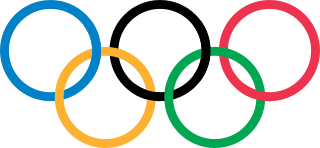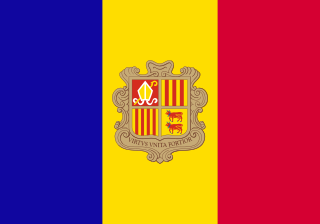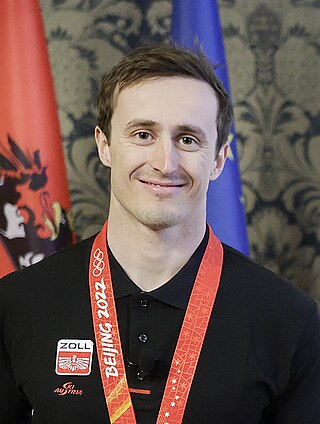
The Winter Olympic Games is a major international multi-sport event held once every four years for sports practiced on snow and ice. The first Winter Olympic Games, the 1924 Winter Olympics, were held in Chamonix, France. The modern Olympic Games were inspired by the ancient Olympic Games, which were held in Olympia, Greece, from 776 BC to 394 AD. The Baron Pierre de Coubertin of France founded the International Olympic Committee (IOC) 1,500 years later in 1894, leading to the first modern Summer Olympic Games in Athens, Greece in 1896. The IOC is the governing body of the Olympic Movement, with the Olympic Charter defining its structure and authority.

The 1952 Winter Olympics, officially known as the VI Olympic Winter Games and commonly known as Oslo 1952, was a winter multi-sport event held from 14 to 25 February 1952 in Oslo, the capital of Norway.

The 1964 Winter Olympics, officially known as the IX Olympic Winter Games and commonly known as Innsbruck 1964, was a winter multi-sport event which was celebrated in Innsbruck, Austria, from January 29 to February 9, 1964. The city was already an Olympic candidate, unsuccessfully bidding to host the 1960 Games. Innsbruck won the 1964 Games bid, defeating the cities of Calgary in Canada and Lahti in Finland. The sports venues, many of which were built for the Games, were located within a radius of 20 km (12 mi) around Innsbruck. The Games included 1,091 athletes from 36 nations, which was a record for the Winter Games at the time. Athletes participated in six sports and ten disciplines which bring together a total of thirty-four official events, seven more than the 1960 Winter Olympic Games. The luge made its debut on the Olympic program. Three Asian nations made their Winter Games debut: North Korea, India and Mongolia.
1952 in sports describes the year's events in world sport.
The 1952 Winter Olympics, officially known as the VI Olympic Winter Games, took place in Oslo, Norway, from 14 to 25 February 1952. A total of 694 athletes representing 30 National Olympic Committees (NOCs) participated in the Games, taking part in 22 events from 6 sports.

Australia first competed in the Winter Olympic Games in 1936 in Garmisch-Partenkirchen, and has participated in every games since, with the exception of the 1948 Games in St. Moritz.

Lebanon sent a delegation to compete at the 1952 Winter Olympics in Oslo, Norway from 14 to 25 February 1952. This was the country's second time competing in a Winter Olympic Games, after their first appearance four years prior. Lebanon was represented in these Olympics by a single alpine skier, Ibrahim Geagea. He competed in three events, and his best finish was 57th in the men's downhill competition.
Edward Bruce Haslingden was an Australian cross-country skier who competed in the 1950s. He finished 74th in the 18 km event at the 1952 Winter Olympics in Oslo. Haslingden also competed in the 50 km event at those same games, but did not finish. Together with Cedric Sloane, as part of Australia's first Winter Olympics team, they were the first Australians to compete at the Winter Olympics in the sport of cross-country skiing.
The men's alpine skiing downhill was the third of six events of the alpine skiing programme at the 1952 Winter Olympics. It was held at Norefjell ski area on Saturday, 16 February, and started at 1 p.m. It followed the women's giant slalom on Thursday and men's giant slalom on Friday.
Gweneth Molony is an Australian figure skater. She is the 1949–1951 Australian national champion. She represented Australia at the 1952 Winter Olympics, where she placed 21st. She and Nancy Burley were the first ladies singles skaters to represent Australia at the Olympics. Molony also competed in pair skating; she is the 1949 Australian national champion with partner Adrian Swan. In 2020 at the IOC headquarters in Lausanne, she was recognised as Australia's first female Winter Olympian. She was presented with her Olympian certificate, and became the earliest Olympian to sign the athletes wall at the new IOC headquarters.
Nancy Burley was an Australian figure skater. She represented Australia at the 1952 Winter Olympics, where she placed 14th. She and Gweneth Molony were the first ladies singles skaters to represent Australia at the Olympics.
Adrian David Swan was an Australian figure skater. He represented Australia at the 1952 Winter Olympics, where he placed 10th. He was the first men's singles skater to represent Australia at the Olympics. In 1951, he also competed at the British Figure Skating Championships. Swan also competed in pair skating; he is the 1949 Australian national champion with partner Gwenneth Molony.

Andorra sent a delegation to compete in the 2010 Winter Olympics held in Vancouver, British Columbia, Canada, from 12 to 28 February 2010. Andorra has never won an Olympic medal, despite appearing at every Winter and Summer Games since 1976. The Andorran delegation to these Olympics consisted of six athletes, four in alpine skiing, one in cross-country skiing, and one in snowboarding, the last being Lluís Marin Tarroch, the first snowboarder to represent Andorra at the Olympics. He placed 34th in his only event, and failed to advance to the quarterfinals as a result. Francesc Soulié, the first Andorran cross-country skier to compete at the Games, made his second Olympics appearance, achieving a 47th place finish in the best of his three events. The four alpine skiers that competed recorded six DNFs in their thirteen combined events, though Mireia Gutiérrez recorded a team-high 24th-place result in her best event.

Uzbekistan sent a delegation to compete at the 2010 Winter Olympics in Vancouver, British Columbia, Canada, from 12–28 February 2010. This was the country's fifth appearance in a Winter Olympic Games. The delegation consisted of three athletes: Kseniya Grigoreva and Oleg Shamaev in alpine skiing, and Anastasia Gimazetdinova in figure skating. None of the Uzbekistani competitors won a medal at these Olympics.

A women's slalom event was held at the 1952 Winter Olympics in Oslo, Norway as part of the alpine skiing programme.
Antoin Miliordos was a Greek alpine skier who represented his nation at the Winter Olympic Games.

Sebastian Foss-Solevåg is a Norwegian World Cup alpine ski racer and specializes in slalom. He is world champion, Olympic bronze medalist and three times national champion in slalom.

Stefan Brennsteiner is an Austrian World Cup alpine ski racer, and specializes in giant slalom. He has competed in two Winter Olympics and three World Championships.










